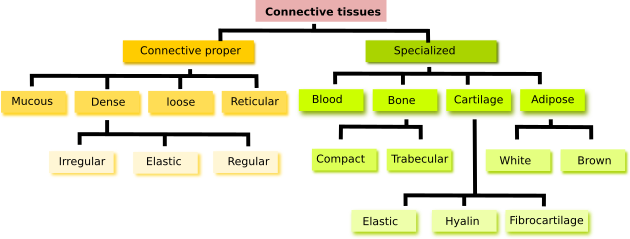Connective tissues are main components of the animal body. Under the name of connective there is a wide variety of tissues (Figure 1), but sharing some common features. One of them is that connective tissues differentiated from mesenchyma (mostly coming from the embryo mesoderm). In addition, they show a remarkable extracellular matrix, which is a scaffolding made up of collagen and elastic fibers, glycoproteins, proteoglycans, glycosaminoglycans, and other molecules. The type and proportion of these components in the extracellular matrix set the structural, mechanical and biochemical properties of the different connective tissues. Extracellular matrix features and cell types define the variety of connective tissues. Connective tissues have been regarded as a supporting tissue because they connect and keep together many organs of the body, they provide mechanical support to different parts of the body and to the whole body as well, and protect and isolate many organs. Furthermore, they allow communication between different parts of the body. For example, the molecules absorbed by epithelia must cross the connective tissue before they reach other tissues, so that some connective tissues are considered internal environment of the body.

 Glandular epithelium
Glandular epithelium